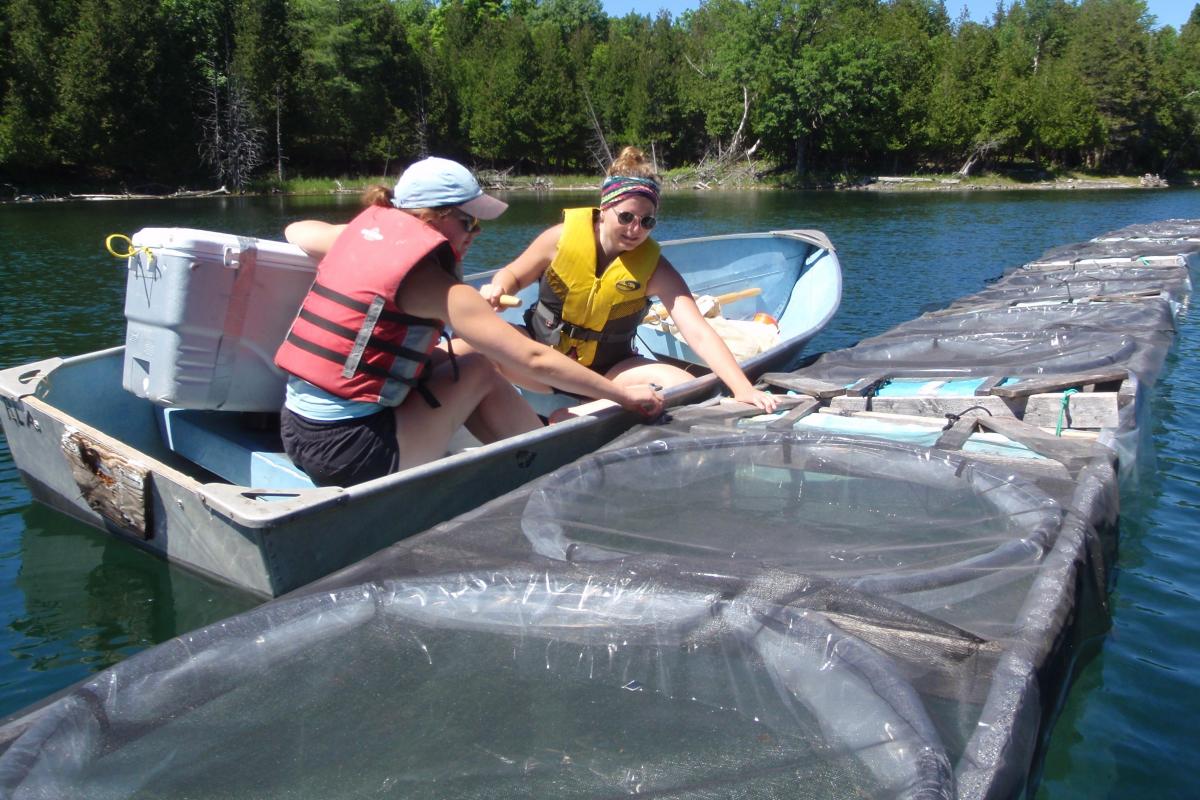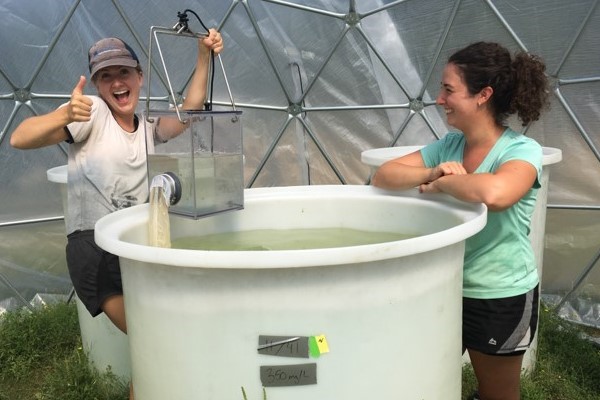Human-induced salt pollution a major threat to biodiversity in lakes
March 22, 2022
Share

During the freezing months of winter, de-icing salt is commonly used by households to make their walkways and driveways safer, and by communities to salt their roads. What many of us don’t think about are the ramifications this salt can have on our water systems. Significant damage is being done to freshwater lakes by salt concentrations that are below ranges government regulators have deemed safe and protective of freshwater organisms.
An international study led by Queen’s researcher Shelley Arnott (Biology) and Bill Hintz (Ecology) of the University of Toledo has found that the salinity of freshwater ecosystems caused by road de-icing salts, agriculture fertilizers, mining operations, and climate change is increasing worldwide, and current water quality guidelines are not effective.
The research, recently published in the Proceedings of the National Academy of Sciences (PNAS), was conducted at 16 sites in four countries. Dozens of scientists across North America and Europe collaborated on this research, including Queen’s students — Danielle Greco, Brooke Rathie, Alex McClymont, and Haley Richardson.
Too much salt in freshwater is problematic because it triggers a massive loss of zooplankton, a major food source for fish, and an increase in algae. Even lakes that met the lowest chloride thresholds established by governments in Canada, the U.S., and throughout Europe experience the negative effects of salination.
"The loss of zooplankton leading to more algae has the potential to alter lake ecosystems in ways that might change the services lakes provide, namely recreational opportunities, drinking water quality and fisheries," says Dr. Arnott. "More algae in the water could lead to a reduction in water clarity, which could affect organisms living on the bottom of lakes as well."

In Canada, the threshold for chloride concentration is around 120 milligrams of chloride per litre, in the U.S. it is around 230 milligrams of chloride per litre, and in Europe this threshold is generally much higher. It can take less than a teaspoon to pollute five gallons of water to the point that is harmful for many aquatic organisms.
But the study shows that negative impacts occur well below those limits. At 11 of the 16 study sites, sodium chloride concentration thresholds that caused more than a 50 per cent reduction in zooplankton were either at or below the established Canadian government chloride thresholds.
Dr. Arnott and the other researchers say the results indicate a major threat to the biodiversity, water quality and functioning of freshwater ecosystems and there is an urgency for governments to reassess current threshold concentrations.
"Salt pollution occurring from human activities such as the use of road de-icing salts is increasing the salinity of freshwater ecosystems to the point that the guidelines designed to protect fresh waters aren’t doing their job," says Dr. Hintz. "Our study shows the ecological costs of salinization and illustrates the immediate need to reassess and reduce existing sodium chloride thresholds and to set sound guidelines in countries where they do not exist to protect lakes from salt pollution."
The researchers suggest that new thresholds should integrate the susceptibility of ecological communities at the local and regional scale. Government must also strike a careful balance between human use of salt responsible for freshwater salinization with ecological impacts, such as reducing or finding alternatives to the amount of road salt used to melt snow and ice in the winter.
For more information on the study, read the paper in PNAS.